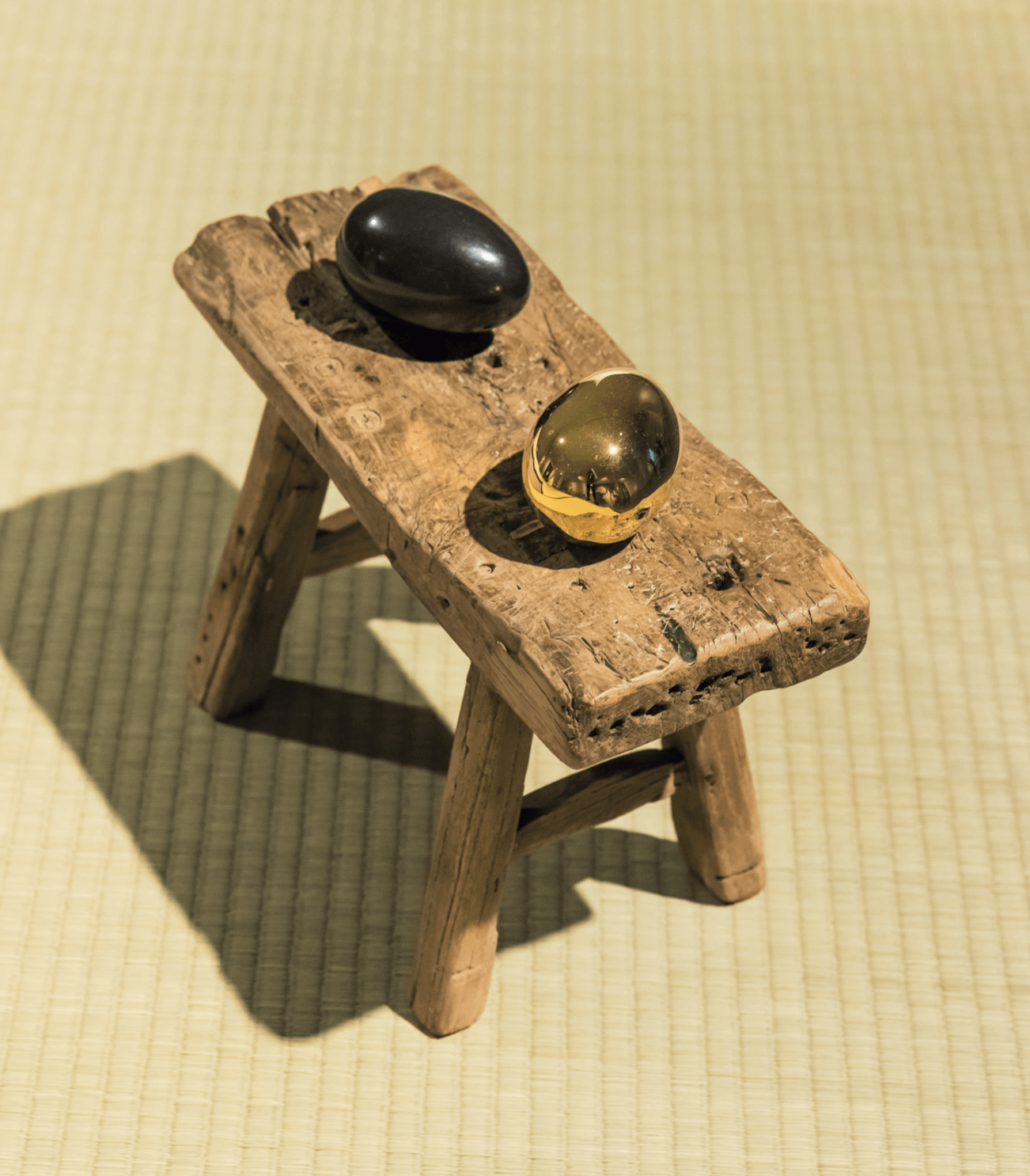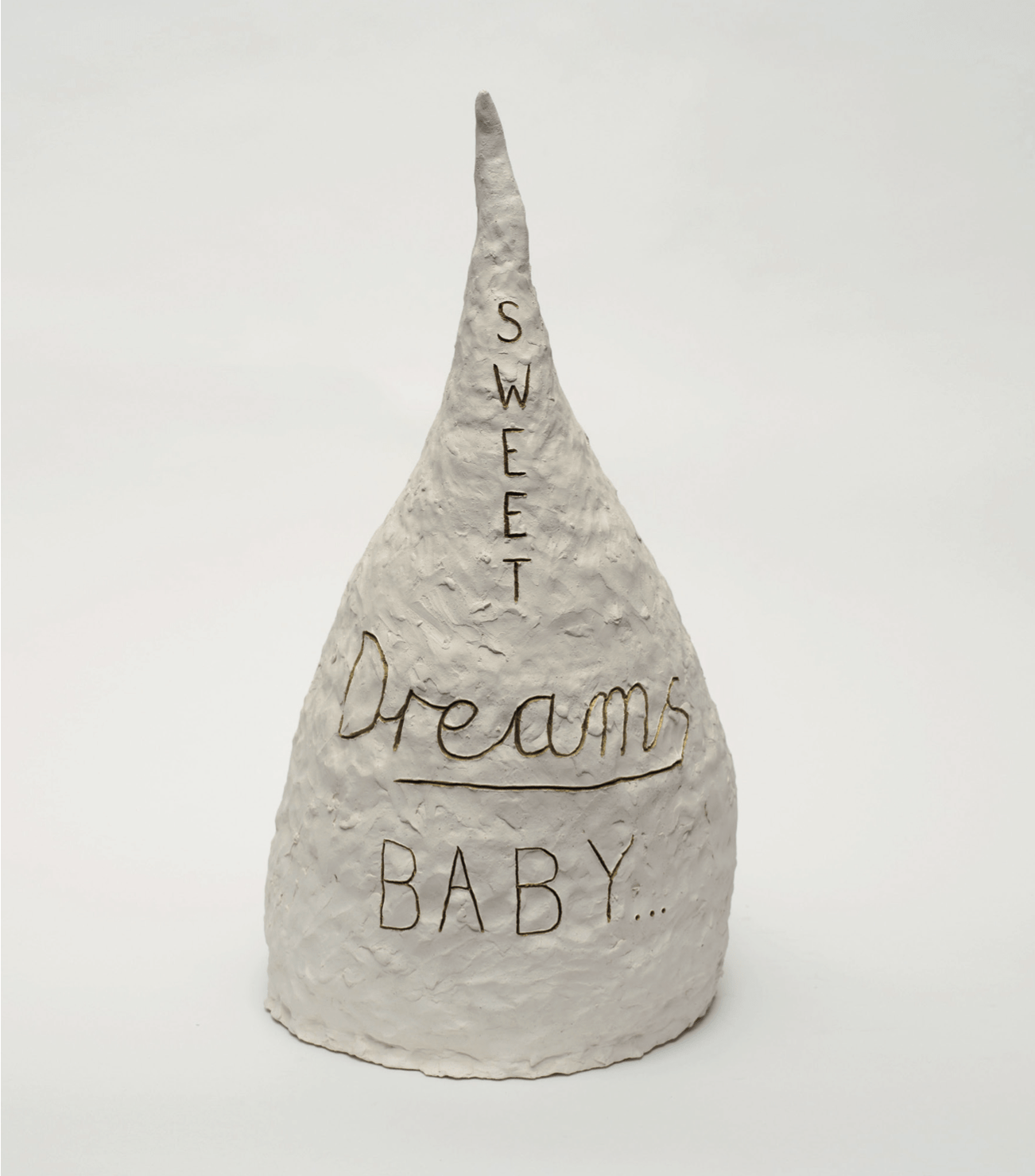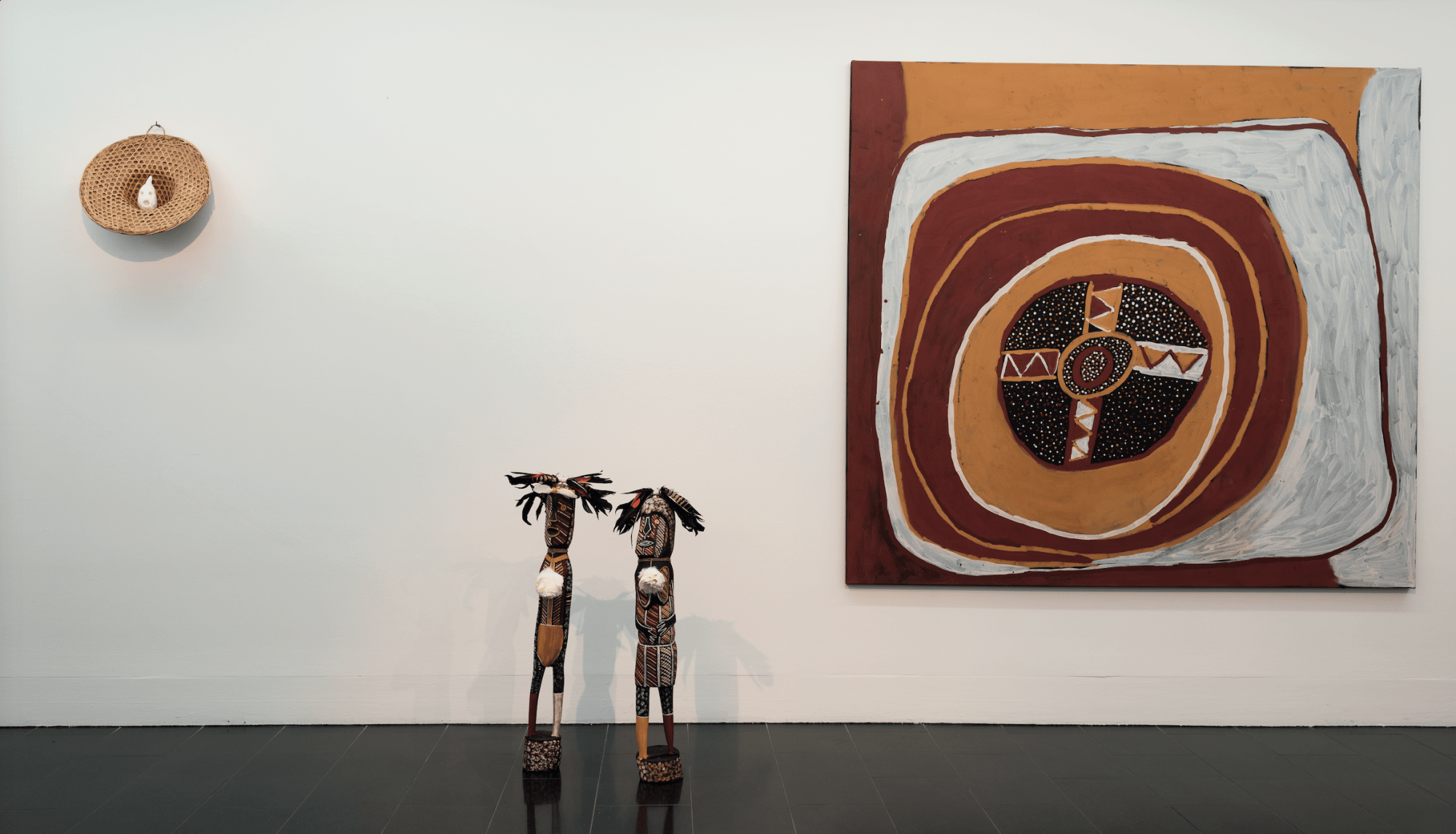Garn’giny, death and rebirth—
Mabel Juli interviewed by Dominic Kavanagh
Gija transcription and translation by Frances Kofod
Mabel Juli Jarrag-jarrag ngenarn-noo garn’giny ngarranggarniny. Nginyjiny garn’giny jarrag ngenarn-noo ngarranggarniny. Ngagenyji ngajiny, ngarranggarniny. He Joowoorroo, I call em brother.
I am talking about the Dreamtime moon story. I am talking about this Dreamtime moon. I say for him, ‘This moon is a Dreamtime, and I’m talking for him.’ My brother, a Dreamtime thing. He is Joowoorroo skin, I call him ‘brother’.
Garlmi nginini goorndarrim. Nginyjiny, goorndarrim garlmi wanemayinde, yilag, Garn’gin ngenengga yilag Darrajayin, yilag. Place called Garn’gi again.
He was catching fish by pushing grass through the water. This one [the moon when he was a man], was catching fish by pushing grass through the water, down there, at the place called Garn’gin in Darrajayin Country. The place is called Garn’gin, the place of the moon, too.
Dominic Kavanagh What does this story teach us about death and dying?
MJ That moon, if they bin let him married that, black head snake. Bat I jarrag. Garn’giny, waj-ngarri nyimberridbe-ni, dal dawool, boora-boorab woomberramande, nawoo-gelaj, boora-boorab-garri ngirne. See? He bin bin wanta married that black head snake. That his thamboorroo. I call em ‘mother-in-law’ too. If they bin give him married, let him married, people would a be, die and come out like him again. Life again, you know.
That moon, if they had let him marry that black-headed snake [who was a woman of his mother-in-law’s skin]. But I say, if they had given the moon that black-headed snake woman [as a wife], they would have kept coming out just like he keeps on appearing. Do you see? He wanted to marry that black-headed snake woman. She was his mother-in-law. I call the black-headed snake ‘mother-in-law’ too. If they had let him marry her, people would have died and come back again like him. Alive again you know.
Joowoorroo. He like me. Me Nyawoorroo, him Joowoorroo, my brother. Nyawana. Yeah he my wardoo. That Nambin, he’s, that’s his daughter.
Garn’giny is in the Joowooroo skin group, which makes him my brother. I am Nyawooroo skin. Nyawana is the right skin for the moon to marry. Nyawana is my sister-in-law. That Nambin, [Nyawana] is her daughter.
DK When someone passes away in Gija culture what happens to them?
MJ Anybody, yeah, where they die? Nang-ngarri boorroowoonbe. They come back la, they come back la people you know when. Jarriny, you know jarriny? They come back, jarriny, baby. Like my son. Son bin passed away, my young son. And he Michael, Michael Malgil, bin come back, that’s my son him come back.
Yes, when they die? When they die, they come back, they come back to other people, they are reborn. ‘Jarriny’ is the spirit that is reborn. Yes you come back as a reborn spirit with another mother. They have the same skin name when they are reborn. Like my son [Leo Juli]. My young son passed away. And now he is Michael Malgil. Michael Malgil is my son who came back.
DK What happens to the body when someone passes away?
MJ Yeah. They put em, they put em paperbark, sometime they, with a blanket, wrap em up. They put em la rock. Sometime they bury em la ground. Nawane, walig bemberrilinbe yiligin nawane. They got big mob everywhere. And they put em ola rock now, ngarrgale rerr finish. Jamboorn, ngarrgalem dambi la that, they put em ola rock you know la hole. Same way like ngaboony, where they bin put em in a thing. And ngaboony bin come back laive igen.
They used to put them in paperbark, sometimes they used to wrap them in a blanket. They put them in a rocky place. Sometimes they bury them in the ground. Or they put them inside a cave. There are lots of burial places everywhere in Gija Country. And they put lots of rocks then, they drag stones there, done. They heap up those stones at that, they cover the hole with rocks. The same way as Jesus, when they put him in that thing. And Jesus came back alive again.
That what ngaboony bin do. They in bury im la nawan, walig la im la nawan. Im bin there for, couple a days, I think three days, and his mum and his Aunty bin go and look in that place. ‘He not there, where him?’ He was standing behind. So they bin look back ‘Oh here!’ They never touch him, nothing. They just leave em. That’s what, that’s the ngaboony way now.
That’s what Jesus did. They buried him in a cave, put him in a cave. He was there for couple of days, I think three days, and his mother and Aunty went and looked at the place [Mabel has interpreted Mary Magdalen as an ‘Aunty’]. ‘He’s not there, where is he?’ He was standing behind. ‘Oh here’ [they said]. They did not touch him, they just left him be. That’s the Jesus way now.
Same way like my grandpa, la Springvale you know, they bin clean, knock all them rock. Well my grandpa was there la that rock. They bin clean em out now my jaja. I can’t find em my grandpa now. My grandpa we, that side rock, you know that rock place one like this, they bin jis, chuck em down there, and chuck ola big, big mob rock la im. That’s what they bin do la my grandpa. And they bin knock em down now. They bin go do mining there now. He finish. You can see all a rock everywhere laying down. Big hole there now.
The same as my grandpa at Springvale you know. They [granite miners] graded that place, knocking all the rocks. Well my grandfather was buried among those rocks. They cleaned out my grandfather, I can’t find my grandpa’s burial place now. My grandfather you know that rocky place like this, they put him down there and put lots of big rocks over him. That’s what they did to my grandfather. And the miners have knocked that place down now. They did mining there and the place is ruined. You can see all the rocks lying down everywhere. There is a big hole there now.
DK How do Gija people say goodbye or mourn someone who has passed away?
MJ They cry now. But early days, people you know, when they bin lose, and, only all the boy go, got that body, all the girl not gonna go. Not girl, no, only all the boy go. They bury em that man or woman, and girl stop la home. When they see the man come back, after that for that, bury em ola dead body now, and they cry now, all a girl cry la camp. See? Law, you know, early days. But not this time, everybody going. No, you can’t see. Or might be some people can look, not like me. Put a smoke, inside. We bin want em for jarriny you know. They come back jarriny.
They cry now. But before, people, when someone dies, only all the men went with the body, women did not go. No women, only the men went. They buried that man or woman and the women stayed home. When they saw the men come back after the burial, all the women cried. All the women in the Sorry Camp cried. You see? It was the law in the old days. But not today, everyone goes. No, you can’t see them [photographs]. Maybe some people can bear to look, not like me. [We should] smoke [the Art Centre] because lots of white people come here. Smoke inside the gallery. We want people who pass away to come back as spirit and be reborn.
DK Do you have any personal thoughts about dying?
MJ I don’t worry. I don’t want to worry. I know my, where this, where this, tell old ngaboony, that’s all we talking to ngaboony. Pray la ngaboony everyday, every night, that’s what we do. We don’t think about for nhang, for die. You get a kangaroo or might be you get sugarbag, big mob sugarbag, you come back jarriny thadan. Might be that girl when he eat em that kangaroo, and he vomiting, where first feeling come out. See, he come back. Even gardiya. We bin have ola gardiya here, ola missus we bin have, they bin get jarriny here too. They wanta know bout that, jarriny. He’ll come out la you. You can call em he right, he finish he come back. Come back jarriny. My daughter bin lose he might come back la somebody, my daughter. Come back la somebody there.
I don’t worry. I don’t want to worry. I know me, when this, we tell God, that’s all. We speak to God. Pray to God every day and every night, that’s what we do. We don’t think about dying. Sometimes when the mother eats kangaroo or sugarbag, you are reborn from that thing. Maybe that woman when she eats the kangaroo and she vomits [as a result of morning sickness], then she knows she is pregnant and a spirit has come back to her. Even white people. We have had lots of white women come here and they became pregnant with the reborn spirits of old people. They go swimming at Winniba Spring and find babies there. They want to know about that, spirits being reborn. It comes out to you [appears]. You can say the name, the time of restriction is finished, once he comes back. Came back, spirit reborn. My daughter died, she might come back to someone [as a baby]. Come back as a baby to someone there.
Note on translation:
There are multiple spellings for the moon in Gija. Garnkiny and Garn’giny are both used in this catalogue. ‘Garnkiny’ is an older spelling, ‘Garn’giny’ is more recent.
Until March 2020 the Gija spelling system used ‘ng’, ‘ngg’, ‘nk’ and ‘rnk’
to distinguish the pronunciation of words like wangala, wangga, wanggarnal, warnkam and wankil.
When Frances Kofod visited the Purnululu Association School at Woorreranginy, Frog Hollow, in March 2020, the Gija school staff asked that instead of ‘nk’ and ‘rnk’ the spelling system should use ‘n’g’ and ‘rn’g’. This is because the sound in the middle of the word really sounds more like a ‘g’ in English.
The ‘ny’ suffix at the end of Gija words that have stems ending in vowels indicate masculine singular gender. The moon was a man in the Ngarranggarni, so the word ends in ‘ny’.
Gija nouns can replace the gender suffixes with a locative ‘n’. ‘Garn’gin’ means ‘in, at, on the moon’ or ‘the place of the moon’.

Timothy Cook and Patrick Freddy Puruntatameri
Tutini (Pukumani pole) 2020
Background, left to right: Timothy Cook
Kulama 2014
Mabel Juli
Garnkiny Ngarranggarni 2020
Installation view, La Trobe Art Institute, 2020

Nell
With things being as they are … 2017
Installation view, La Trobe Art Institute, 2020
Photograph: Ian Hill

Sprite resting in hat 2017

BYE-bye 2017

Two on One 2017

Mother and Child #2 2017

BYE-bye 2017

Sprite guide me (detail) 2017

I AM Passing through 2017 BYE-bye 2017
Installation view, La Trobe Art Institute, 2020
Photograph: Ian Hill

SWEET dreams BABY . . . 2017

A cross 2017

SWEET dreams BABY . . . 2017

Nell
The sound of A face 2017

Kulama 2014

Nell
With things being as they are … 2017
Background, left to right: Patrick Freddy Puruntatameri Purukuparli 2020
Waiyai 2020
Timothy Cook Kulama 2013 Kulama 2014
Timothy Cook and Patrick Freddy Puruntatameri
Tutini (Pukumani pole) 2020 Tutini (Pukumani pole) 2019 Tutini (Pukumani pole) 2020
Installation view, La Trobe Art Institute, 2020
Photograph: Ian Hill

Nell
With things being as they are … 2017
Patrick Freddy Puruntatameri Purukuparli 2020
Waiyai 2020
Timothy Cook Kulama 2013
Installation view, La Trobe Art Institute, 2020
Photograph: Ian Hill
